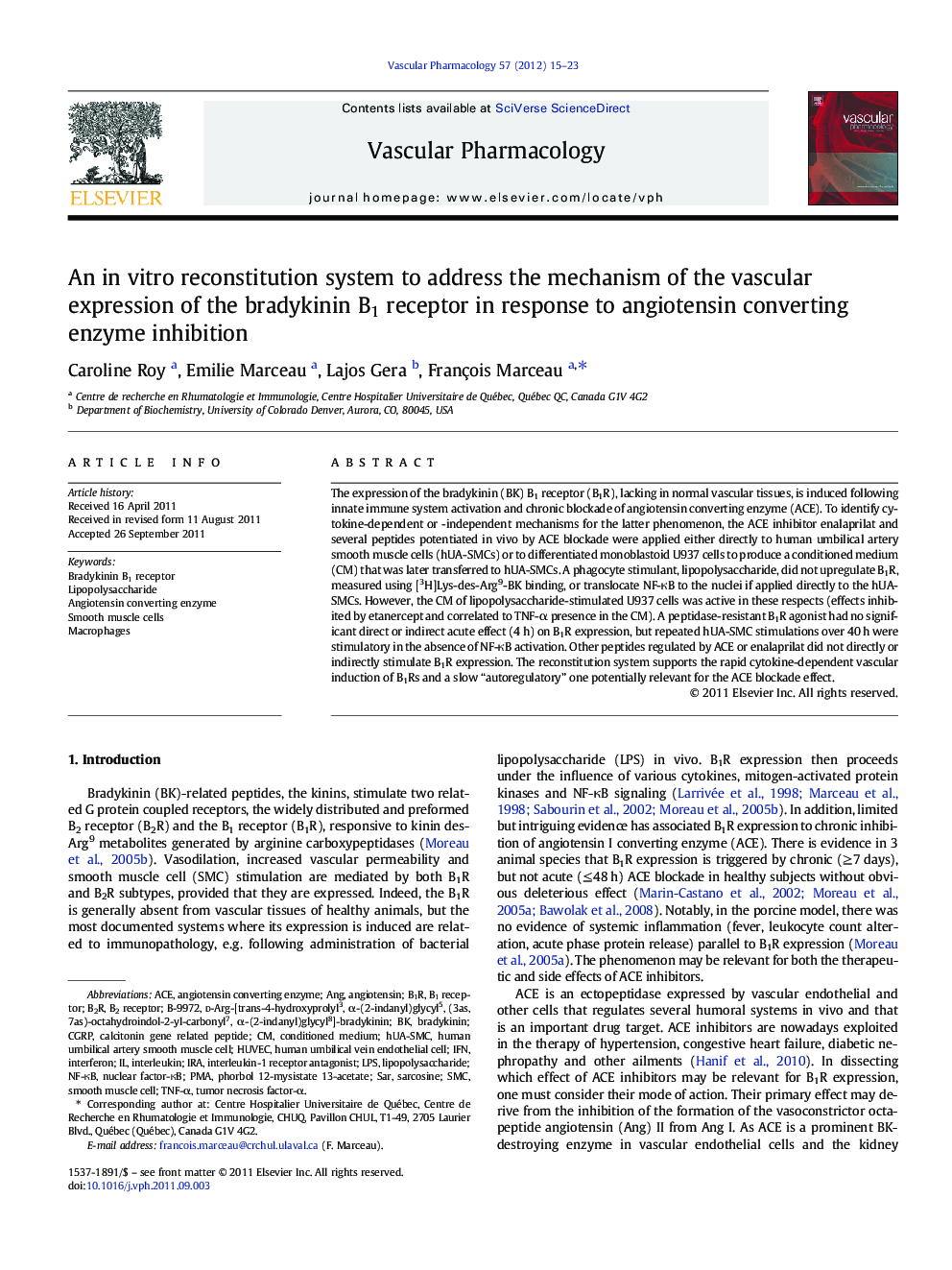| Article ID | Journal | Published Year | Pages | File Type |
|---|---|---|---|---|
| 2574352 | Vascular Pharmacology | 2012 | 9 Pages |
The expression of the bradykinin (BK) B1 receptor (B1R), lacking in normal vascular tissues, is induced following innate immune system activation and chronic blockade of angiotensin converting enzyme (ACE). To identify cytokine-dependent or -independent mechanisms for the latter phenomenon, the ACE inhibitor enalaprilat and several peptides potentiated in vivo by ACE blockade were applied either directly to human umbilical artery smooth muscle cells (hUA-SMCs) or to differentiated monoblastoid U937 cells to produce a conditioned medium (CM) that was later transferred to hUA-SMCs. A phagocyte stimulant, lipopolysaccharide, did not upregulate B1R, measured using [3H]Lys-des-Arg9-BK binding, or translocate NF-κB to the nuclei if applied directly to the hUA-SMCs. However, the CM of lipopolysaccharide-stimulated U937 cells was active in these respects (effects inhibited by etanercept and correlated to TNF-α presence in the CM). A peptidase-resistant B1R agonist had no significant direct or indirect acute effect (4 h) on B1R expression, but repeated hUA-SMC stimulations over 40 h were stimulatory in the absence of NF-κB activation. Other peptides regulated by ACE or enalaprilat did not directly or indirectly stimulate B1R expression. The reconstitution system supports the rapid cytokine-dependent vascular induction of B1Rs and a slow “autoregulatory” one potentially relevant for the ACE blockade effect.
Graphical abstractFigure optionsDownload full-size imageDownload high-quality image (124 K)Download as PowerPoint slide
